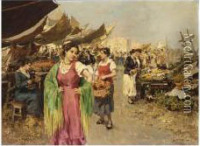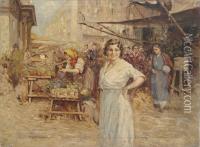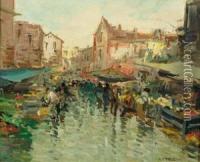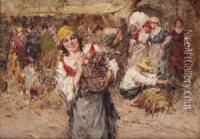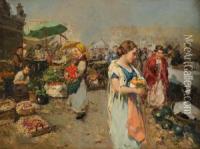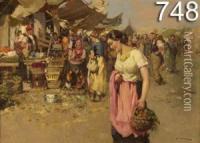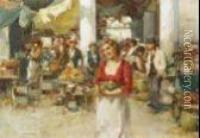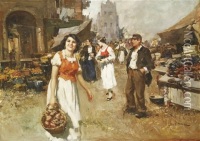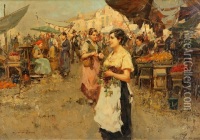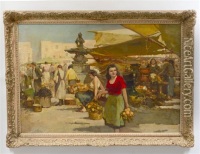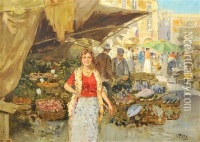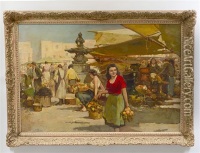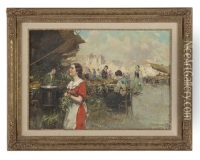Giuseppe Pitto Paintings
Giuseppe Pitto was an Italian painter known for his vibrant and picturesque landscapes, seascapes, and genre scenes. Born in Genoa, Italy, Pitto lived during a period that saw significant changes in the art world, but he remained deeply rooted in the traditions of the 19th century, particularly in the Romantic and Post-Impressionist movements. His work is characterized by a rich palette, meticulous detail, and a deep affection for the Italian countryside and its people.
Pitto's early life was marked by a passion for art, leading him to study at the Accademia Ligustica di Belle Arti in Genoa. He was influenced by the works of the Macchiaioli, a group of Italian artists who prefigured the Impressionists in France. Although Pitto did not fully embrace their technique, the emphasis on light and color in their work significantly impacted his own. After his studies, he traveled across Italy, capturing the diverse landscapes and daily life of its inhabitants. These travels provided a vast source of inspiration for his paintings.
Throughout his career, Pitto exhibited his work extensively in Italy and abroad, gaining recognition and accolades. His paintings were celebrated for their ability to evoke emotion and capture the ephemeral beauty of the natural and human-made environment. Despite the shift towards modernism in the early 20th century, Pitto's work remained popular among collectors and the public, who were drawn to the nostalgic and idyllic qualities of his scenes.
In addition to landscapes and seascapes, Pitto also painted portraits and still lifes, though these were less frequent. His approach to these genres was consistent with his broader oeuvre, focusing on the interplay of light and color to capture the essence of his subjects.
Giuseppe Pitto's legacy is that of an artist who bridged the gap between the 19th and 20th centuries, maintaining traditional techniques and themes while subtly incorporating the innovations of his time. His works are held in private collections and museums across the world, continuing to enchant viewers with their timeless beauty and emotional depth. Pitto passed away in 1954, leaving behind a rich body of work that continues to be appreciated for its technical skill and evocative power.
